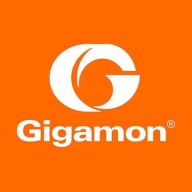

Gigamon Deep Observability Pipeline and Microsoft Defender Vulnerability Management compete in the network security and observability domains. Users appear more satisfied with Microsoft's comprehensive features, making it a stronger contender.
Features: Gigamon Deep Observability Pipeline offers valuable features like network traffic visibility, real-time analytics, and data decryption capabilities. Microsoft Defender Vulnerability Management provides robust threat detection, vulnerability assessment, and reporting features.
Room for Improvement: Gigamon could improve ease of setup, integration capabilities, and resource efficiency. Microsoft Defender could enhance its user interface, data export options, and provide more detailed documentation for better user experience.
Ease of Deployment and Customer Service: Gigamon offers robust deployment that integrates well with infrastructures but requires more initial setup time. Microsoft Defender benefits from seamless integration with Microsoft services, offering straightforward implementation and extensive customer support.
Pricing and ROI: Gigamon is positioned as a premium product with significant ROI for deep insights but high initial setup costs. Microsoft Defender is competitively priced, offering significant value through its security suite and lower setup costs.
As a Microsoft partner, we receive significant discounts, making the solution affordable for us.
The technical support by Gigamon Deep Observability Pipeline is good because it has a local architect in my area.
They are sometimes responsive, however, often issues cannot be reproduced on their end, making it challenging.
The support we receive from Microsoft is declining, and for example, after taking advanced support, we have not received satisfactory answers.
My team raised multiple support tickets for the product, and we were able to get responses from Microsoft support team.
It is scalable; I evaluated the product and decided to use Defender on over 700 of our company servers.
There are compatibility issues occasionally arising with false positives when other security tools are not whitelisted in Microsoft Defender.
It is very resource-intensive, consuming a lot of memory and CPU.
I would rate the overall stability as an eight.
This scoring should be for specific industries as well. If I belong to the healthcare industry using Microsoft Defender Vulnerability Management, it should provide me with a risk score and show how I fare against the risk score of my industry.
Endpoint defense could be improved, and we could discuss next-generation protection, threat management, and Vulnerability Management as well.
Sometimes, it takes one week, when it should ideally take only one to two hours.
For non-partners, however, the cost could be seen as higher, between seven to ten.
Overall, every organization wishes for cheaper options, but we look at the security side as well, so we are good for now.
The pricing is reasonable, and it's included in the whole Microsoft E5 bundle, so it's all-inclusive.
The Pipeline's Comprehensive Insights into data flows have helped improve operational efficiency and security.
The main advantage of Microsoft Defender Vulnerability Management is that it can locate and prevent most threats even when the endpoints are not connected to the corporate network, as long as the internet is available.
Microsoft Defender Vulnerability Management provides regular advisories and recommendations that help improve our security posture.
Microsoft Defender Vulnerability Management is versatile and assesses vulnerabilities, providing detailed information on CVEs, their categories, and exploit statuses.
| Product | Market Share (%) |
|---|---|
| Microsoft Defender Vulnerability Management | 1.2% |
| Gigamon Deep Observability Pipeline | 0.8% |
| Other | 98.0% |


| Company Size | Count |
|---|---|
| Small Business | 3 |
| Midsize Enterprise | 1 |
| Large Enterprise | 5 |
| Company Size | Count |
|---|---|
| Small Business | 8 |
| Midsize Enterprise | 2 |
| Large Enterprise | 5 |
Gigamon Deep Observability Pipeline is a comprehensive network visibility solution that provides real-time insights into network traffic. It offers SSL inspection and mobile network monitoring for traffic monitoring purposes. The solution optimizes networks, aids in security inspection, and improves firewall performance. It is praised for its performance, power, straightforward integration, stability, and ease of initial setup.
With Gigamon, organizations can gain complete visibility into their network traffic, identify potential threats, and take proactive measures to prevent them. The solution is ideal for organizations of all sizes, including enterprises, service providers, and government agencies.
Microsoft Defender Vulnerability Management enables organizations to identify vulnerabilities, manage patches, and fortify threat detection. It offers endpoint assessments, cloud incident management, and dynamic security through Microsoft's Security Scorecard integration.
Organizations leverage Microsoft Defender Vulnerability Management for advanced threat detection and response. It provides robust tools for vulnerability assessment and cloud incident management, integrated with Microsoft's Security Scorecard to enhance dynamic security profiling. Key features include automatic patch deployment, security configuration management, and seamless integration with Microsoft platforms, benefiting both on-prem and cloud environments. Organizations can track vulnerabilities with severity-based reports, helping manage outdated software and minimizing threat exposure.
What are the key features of Microsoft Defender Vulnerability Management?In healthcare, Microsoft Defender Vulnerability Management helps manage compliance with health regulations, while in finance, it aids in securing sensitive data from cyber threats. Manufacturing sectors benefit from its patch management, keeping operational technology systems less vulnerable to disruptions.
We monitor all Advanced Threat Protection (ATP) reviews to prevent fraudulent reviews and keep review quality high. We do not post reviews by company employees or direct competitors. We validate each review for authenticity via cross-reference with LinkedIn, and personal follow-up with the reviewer when necessary.